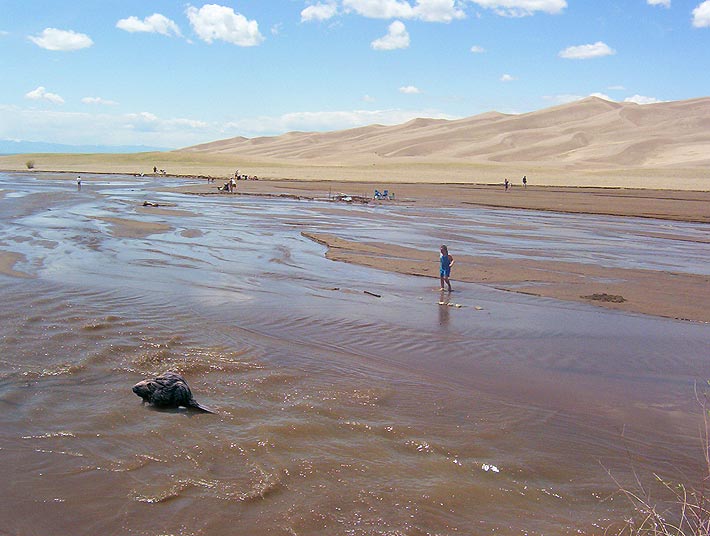
Yesterday was a lazy day for me of sitting in the sun and pondering beaver achievements. Others were more ambitious. Rick went on a private guided field trip to Sespe creek with the chief warden. If the name ‘Sespe Creek‘ sounds vaguely familiar, it should. One of the two beaver skull anomalies mentioned in Joseph Grinnell’s 1937 book on fur-bearing animals in California was found there. Since he had already concluded that there were no beavers in Southern California, and he was the very well respected head of the zoological department at UC Berkeley, he decided the skull was a fluke and dismissed it.
 Rick found a recently digitized letter between Grinnell and the physician who sent that skull to the museum, Dr. John Hornung, of Ventura who donated many specimens to many museums. (He happens to have been the grandson of the very respected naturalist the Swainson’s hawk was named for). The letter describes how John personally came upon that beaver and shot it himself in 1906 about 20 years before fish and game reintroduced beavers anywhere. Meaning that it was for certain, an actual beaver in actual Ventura – But the book was at the printer’s and his mind was made up. No beavers in SoCal.
Rick found a recently digitized letter between Grinnell and the physician who sent that skull to the museum, Dr. John Hornung, of Ventura who donated many specimens to many museums. (He happens to have been the grandson of the very respected naturalist the Swainson’s hawk was named for). The letter describes how John personally came upon that beaver and shot it himself in 1906 about 20 years before fish and game reintroduced beavers anywhere. Meaning that it was for certain, an actual beaver in actual Ventura – But the book was at the printer’s and his mind was made up. No beavers in SoCal.
Not even the one you shot.

Others like Mike Callahan spent the day watching the screening of the new film DamNation. It was made possible by the tireless work of beaver-friend Matt Stoecker and his helpers at Patagonia. Even though this is a stunning accomplishment, I can totally believe Matt got this done. He’s a cheerful fire hose. Callahan says it was amazingly powerful and we should all go see it when we get the chance.
Today I will have lunch with Rick Lanman, Duane Nash (of Southland beaver) and some US fish and wildlife folk who he convinced to talk about beavers. We are meeting at the house so I’m assuming they might not want to be seen in public talking about the rodent.
Then tonight it’s the poster session where ideas can be freely swapped. Tomorrow morning will be Riley’s seminar on restoring urban streams where I will present about the work beavers can do before a very long drive home. What a whirlwind!
Good thing I rested yesterday!
















































